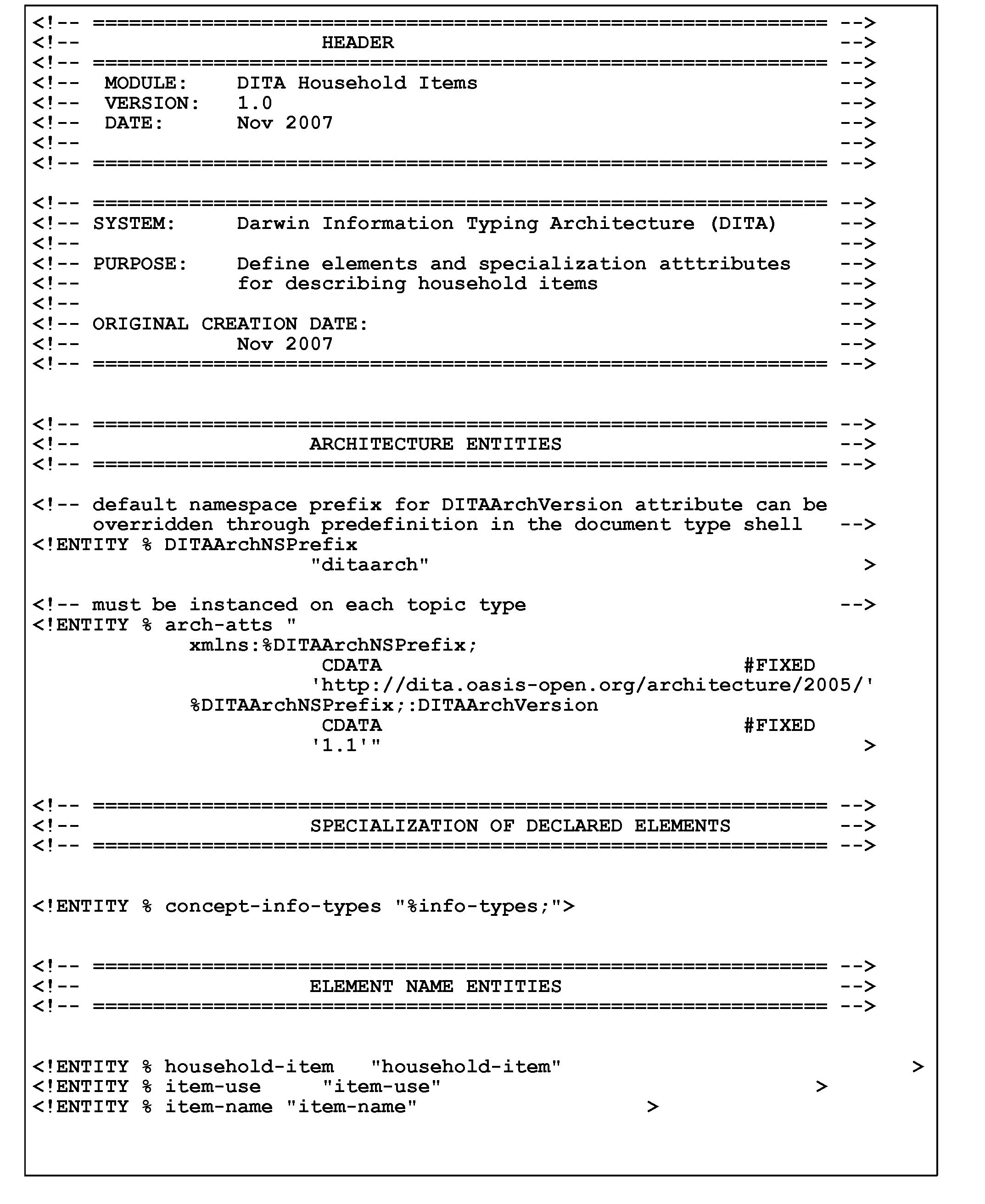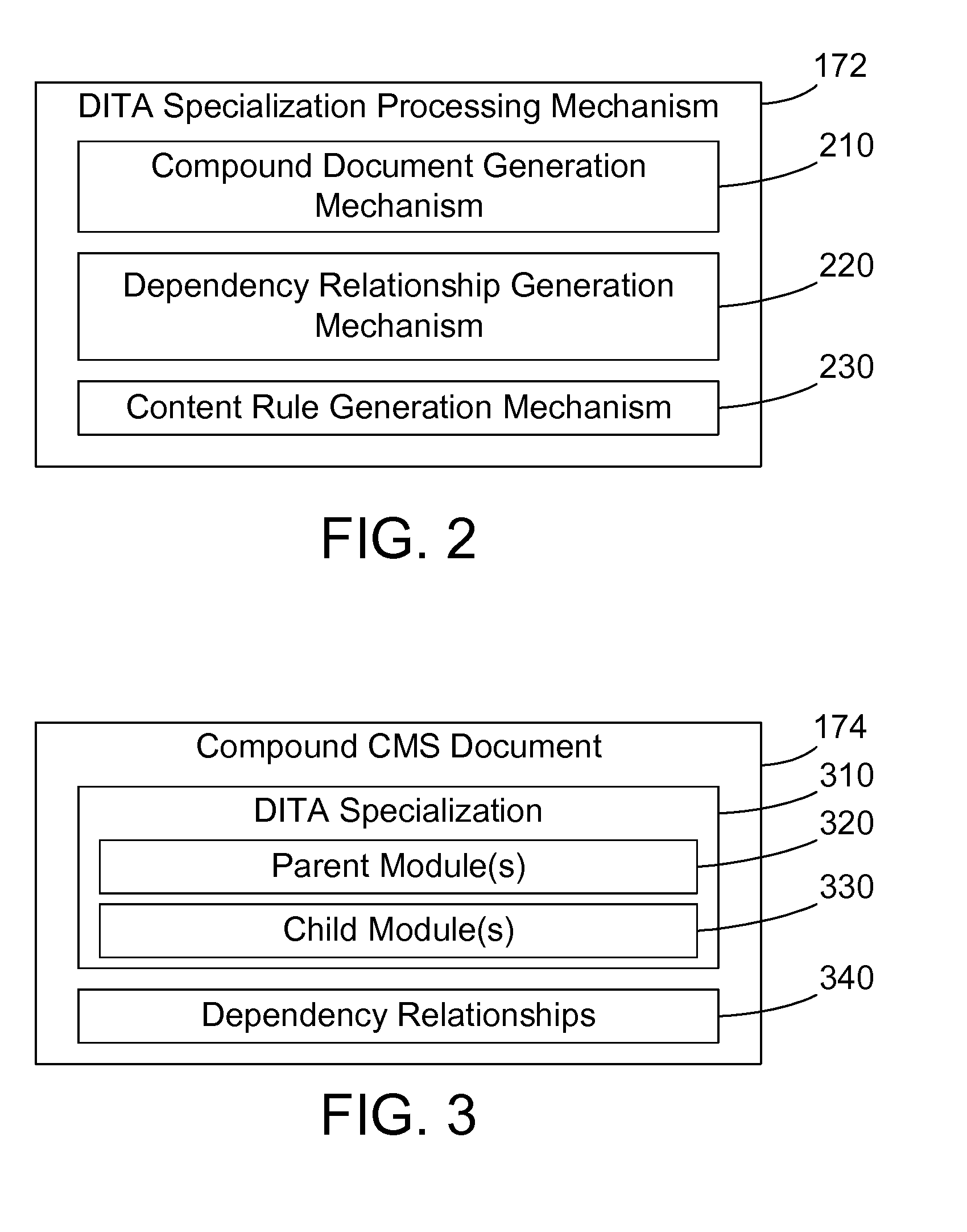Document specialization processing in a content management system
a content management system and document specialization technology, applied in the field of content management systems, can solve the problems of not being able to effectively merge the features of cms relationship management and rule processing, not being able to adequately support the seamless integration of specialized dita in the known content management system, and not being able to formalize the binding between a specialization and its base typ
- Summary
- Abstract
- Description
- Claims
- Application Information
AI Technical Summary
Problems solved by technology
Method used
Image
Examples
Embodiment Construction
[0025]The DITA architecture and content management systems have developed somewhat independently of each other. As a result, there is currently no known content management system that fully supports DITA specializations with respect to CMS relationship management and content rule processing. The disclosure and claims herein provide a content management system that supports tighter integration with DITA specializations by generating an import descriptor that describes how to import a DITA-based DTD and its associated collection of artifacts into the repository of the content management system. Once imported, a compound CMS document is created with appropriate parent / child links based on the DITA-based DTD and its associated artifacts, and formal CMS dependencies between modules in the compound document are created. In addition, XML content rules may be automatically generated for the DITA specialization based on existing content rules.
[0026]Referring to FIG. 1, networked computer sys...
PUM
 Login to View More
Login to View More Abstract
Description
Claims
Application Information
 Login to View More
Login to View More - R&D
- Intellectual Property
- Life Sciences
- Materials
- Tech Scout
- Unparalleled Data Quality
- Higher Quality Content
- 60% Fewer Hallucinations
Browse by: Latest US Patents, China's latest patents, Technical Efficacy Thesaurus, Application Domain, Technology Topic, Popular Technical Reports.
© 2025 PatSnap. All rights reserved.Legal|Privacy policy|Modern Slavery Act Transparency Statement|Sitemap|About US| Contact US: help@patsnap.com



